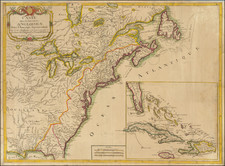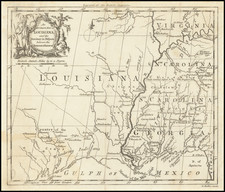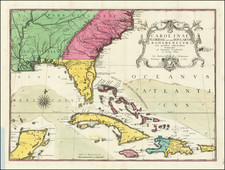Unrecorded Civil War field copy of Herman Boye's seminal map of Virginia, printed in the field by the Union Army and issued to Colonel (later General) Hugh Ewing on February 12, 1862.
This example of Boye's map is apparently the sole surviving example of a copy of the Boye map made in the field by the Union Army mapmakers for use by commanding officers. The map has a small green "x" south of Harper's Ferry and west of Hillsborough, Virginia, which may indicate Colonel Ewing's location or some other relevant field note at the time he was issued the map. It is known that Ewing was in Charlestown (now in West Virginia) on February 26, 1862, approximately 10-12 miles northwest of the location of the "x".
The map was issued to Colonel (later General) Hugh Ewing on February 12, 1862 by Major Israel C. Woodruff, who would become the Chief of the Bureau of Maps and Engineering in December 1862. It would appear to be an example of a field map created by the Bureau in the field utilizing a precursor to the Diozotype process, which was invented during the Civil War.
Herman Boye's map of Virginia is among the most important maps of Virginia published in the 19th Century. Originally issued in 9 sheets in 1827, the map was prepared by Herman Boye at the request of the Virginia legislature as a compilation of local surveys, which began with the creation of a series of 102 County maps by John Wood and Herman Boye from 1819 to1825, which were later used by Boye to create a comprehensive map of the state published 1827 and later updated and revised at the request of the Virginia legislature by Lewis von Buccholtz in 1859.
Hugh Boyle Ewing (1826 - 1905), was a diplomat, author, attorney, and Union Army general during the American Civil War. He was a member of the prestigious Ewing family, son of Thomas Ewing, the eldest brother of Thomas Ewing, Jr. and Charles Ewing, and the foster brother and brother-in-law of William T. Sherman.
In 1861, Ewing's political connections helped save the reputation of his brother-in-law, William T. Sherman. Ewing himself went on to become Sherman's most trusted subordinate. His campaigning eventually led to the near-banishment of Lorenzo Thomas, a high ranking regular army officer who had intrigued against Sherman. He was present at the Battle of Antietam, where his brigade saved the flank of the Union Army late in the day. During the Vicksburg campaign, Ewing accidentally came across personal correspondence from Confederate President Jefferson F. Davis to former President Franklin Pierce which eventually ruined the reputation of the latter. Ewing was also present in Kentucky during Major General Stephen G. Burbridge's "reign of terror", where he worked to oppose Burbridge's harsh policies against civilians.
The map is from the collection of George Osterheld, which included a number of maps given to him by his brother Henry Osterhend, who served as a senior topographical engineer in the Union Army.











![[ First Map of Pennsylvania Province ] A Map of the Province of Pensilvania Drawn from the Best Authorities By T. Kitchin Gr.](https://storage.googleapis.com/raremaps/img/small/98226.jpg)
![[ Florida Indians - Destroying the Enemy's Towns By Night ] Hostium oppida noctu incendendi ratio. XXXI.er absagen](https://storage.googleapis.com/raremaps/img/small/97385.jpg)

